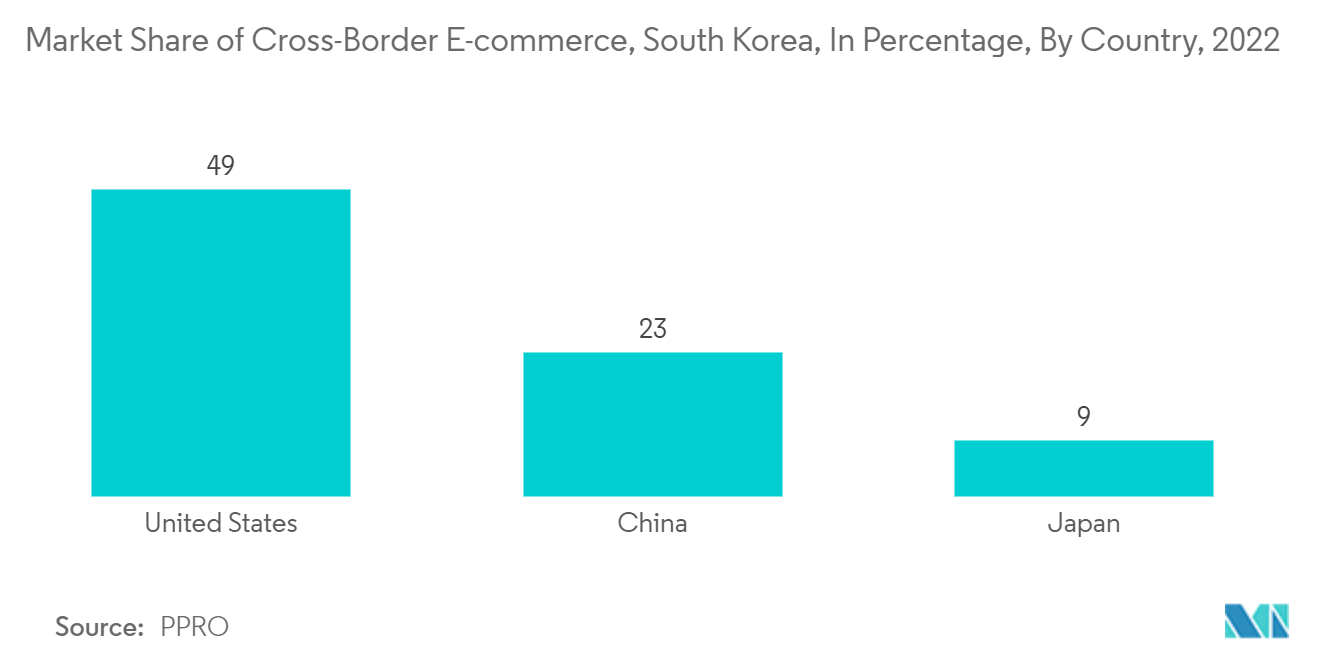Market Trends of South Korea International Courier, Express, And Parcel (CEP) Industry
Cross-border E-commerce is Stimulating the Growth
The cross-border e-commerce market in Korea has increased from USD 2 billion in 2017 to USD 4.5 billion in 2022, resulting in a 23 % of average annual growth rate. While it has been growing at a two-digit rate, Korean domestic retail has been growing at only a 3.8 percent rate every year during the same period. Buying from the Korean retail channels can be more expensive than sourcing goods from overseas even after adding-in international shipping fees and tariffs. Developing cross-border trade channels, especially in emerging nations, has enhanced the adoption of international trade and B2C shipments. Furthermore, the increasing consumer preference for shopping online through various e-commerce portals is also providing a boost to market growth. E-commerce stores partner with courier service providers to deliver their products across domestic and international locations.
With half of the Asia-Pacific online shoppers making purchases cross-border, vendors now are focusing on building extensive knowledge of procedures, such as duty collection, customs clearance, and other minefields. Automated package and freight shipping solutions are available to improve efficiency for the entire shipping process of retail vendors.
Buying agents at various Korean e-commerce platforms are also contributing to the growth of Korea's cross border e-commerce. Many registered sellers at these Korean e-commerce sites source products internationally and send them to Korea. Of all internationally sourced goods sold to Koreans via cross border, 49 percent comes from the United States and the most popular products are health supplements (19.4 %), apparel (17.7 %), electronics (10.4 %), footwear (7.3 %), and handbags and bags (6.8 %).

Growth in Fashion Sector Driving the Market
South Korea is the 6th largest market for eCommerce with a predicted revenue of USD 101.8 billion by 2023, placing it ahead of France. So far, apparel and personal care sales in 2022 have grown rapidly, reaching more than USD 36 billion and USD 16 billion, respectively. With an expected 7.6% increase in 2023, the South Korean eCommerce industry contributed to a worldwide growth rate of 17.0% in 2023.
Global eCommerce sales are expected to increase in the next years, just as they have in South Korea. Fashion is the most significant market in South Korea, accounting for 32.1% of total eCommerce revenue. Food & Personal Care (25.4%), Electronics & Media (20.7%), Toys, Hobby & DIY (13.3%), and Furniture & Appliances (8.5%) are the next most popular categories. However, over 38 million consumers bought consumer items through e-commerce sites.
Moreover, sales in the fashion category are driven by increasing internet users in the country. In January 2022, the country had more than 50.3 million internet users, with more than 98% of the total population using internet services. Also, South Korean citizens' total annual spending on online consumer goods purchases accounted for more than USD 110 billion, with an annual growth rate of 15%. In January 2022, total online sales accounted for more than KRW 16.54 trillion, in which the fashion category contributed more than a 22% share of sales.


